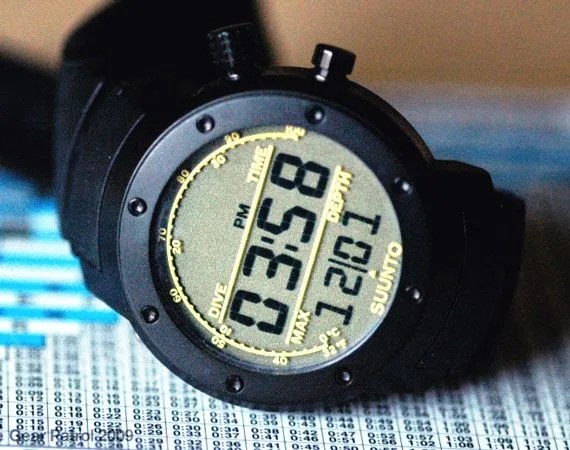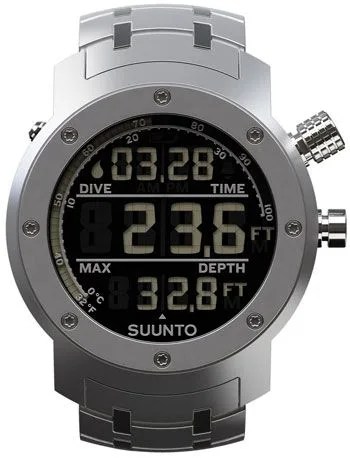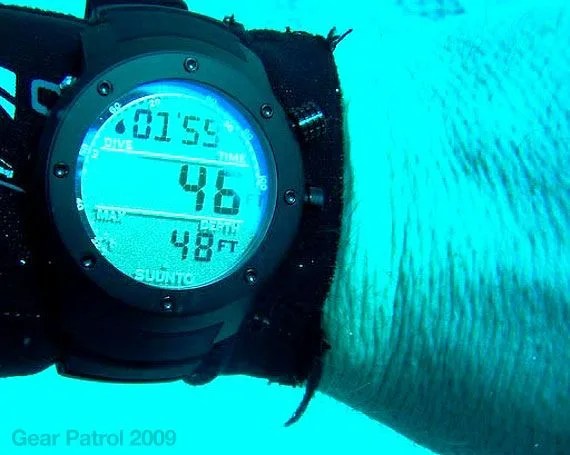
There was a time, believe it or not, when dive watches were actually worn for diving. The forebears of those Rolexes and Omegas you see in the boardrooms and at ballgames were once necessary equipment for divers to track bottom time and decompression stops. Today they are largely symbols of adventure and masculinity, though they seldom descend deeper than the swimming pool. The advent of dive computers changed everything and relegated the dive watches of yore to backup timers at best or status symbols at worst. Suunto, the Finnish company who has produced some of the most advanced and best-known dive computers in the world, has now released an intriguing hybrid dive watch that will do a lot of what a dive computer can do but then also make the transition to the office. Introducing the Elementum Aqua.

The Elementum is Suunto’s first foray in the luxury watch market. They have released three versions – the Terra, the Ventus and the Aqua, each designed for a different purpose (trekking, sailing and diving). All of the watches boast features found on other high end watches such as sapphire crystals, sculpted steel cases, and high quality strap and bracelet choices. But they retain much of the functionality for which Suunto is legendary. I recently took the Elementum Aqua on a dive trip to see how it performs topside and at depth.
The version Suunto provided was the black case with rubber strap. The case is beautifully designed, with sloping angular lugs and a bezel secured by small Torx screws, which give it an industrial, modern look. Suunto left behind their usual composite case material for 316L stainless steel, which endows the Elementum with the weight and heft dive watch connoisseurs have come to expect. A sapphire crystal is another improvement that will make people happy, since it is virtually scratchproof compared to the more pedestrian mineral glass. The well-thought-out digital display provides pertinent, assimilated information at a glance as only digital can do, and is overlaid with crisp yellow lettering and a temperature scale. Whether a digital display watch can ever be considered upscale or dressy is open to debate however.
Perhaps the most distinguishing part of the Elementum is its protruding knurled pusher, which is used to access most of the watch’s functions. The pusher is a pleasure to use, operating with just enough resistance when turned and pressed. The watch’s dive functions are smart and idiot-proof. When submerged deeper than a meter, the Elementum Aqua automatically goes into dive mode, displaying current depth, maximum depth, dive time and water temperature in one view. Pressing the pusher illuminates the entire dial for viewing in the bowels of a wreck or on a night dive. After exiting the water, the watch starts to count up your surface interval time, a crucial and useful feature. Dive information is saved into a log and the watch can store up to 14 dives before it begins to overwrite with subsequent information. So far so good – while the Elementum won’t replace a dive computer, which can track no-decompression times and log many more dives, it is still a worthy dive companion.

So how does this swanky Suunto perform on dry land? Well, there it needs to get by on its good looks. I found the Elementum lacking several key features that, if you’re going to make a digital watch, should be standard. I would have liked a second time zone function for use when traveling or calling the Berlin office. A running seconds display is missing as well, which is handy when you want to time something at a glance, such as when taking a pulse. But the biggest oversight is the lack of a chronograph (stopwatch) function. If this is a watch you can wear from office to dive boat and everywhere in between, a stopwatch is essential for timing a morning jog, laps at the pool or a boiling egg. It would have been so easy to include these functions since Suunto has them on most of their other sports watches.
